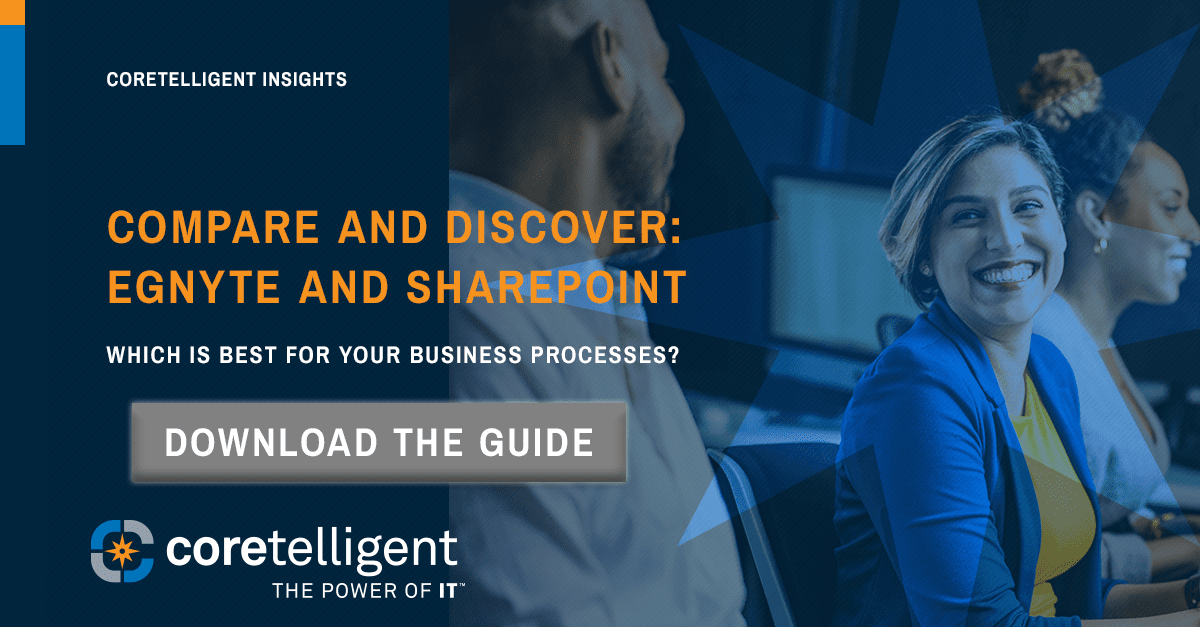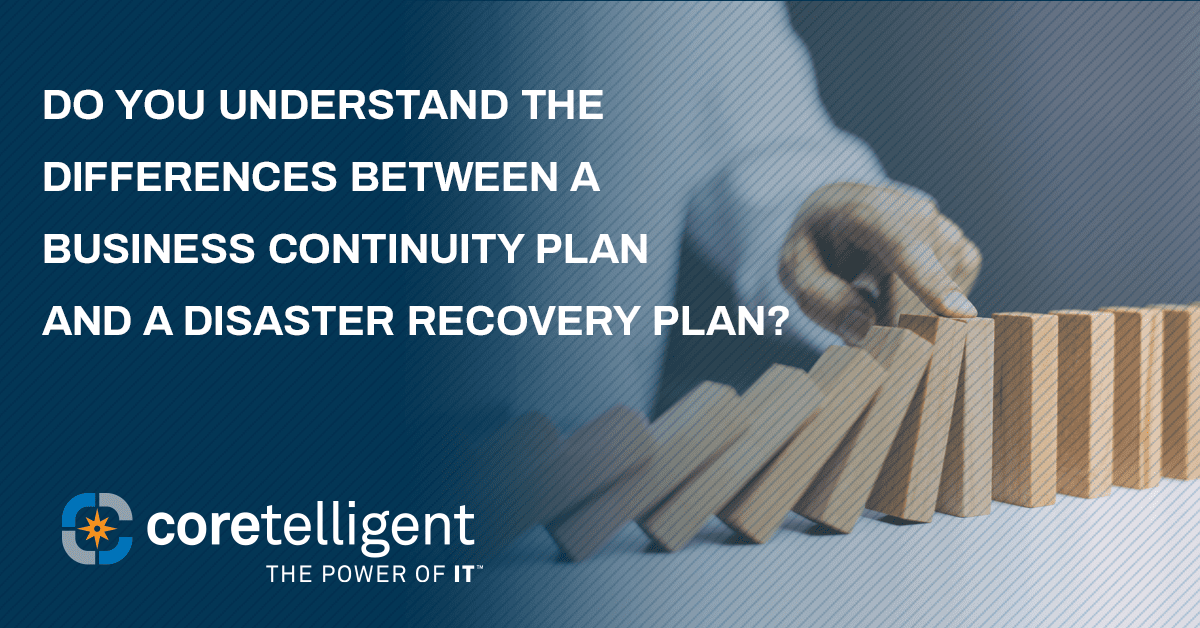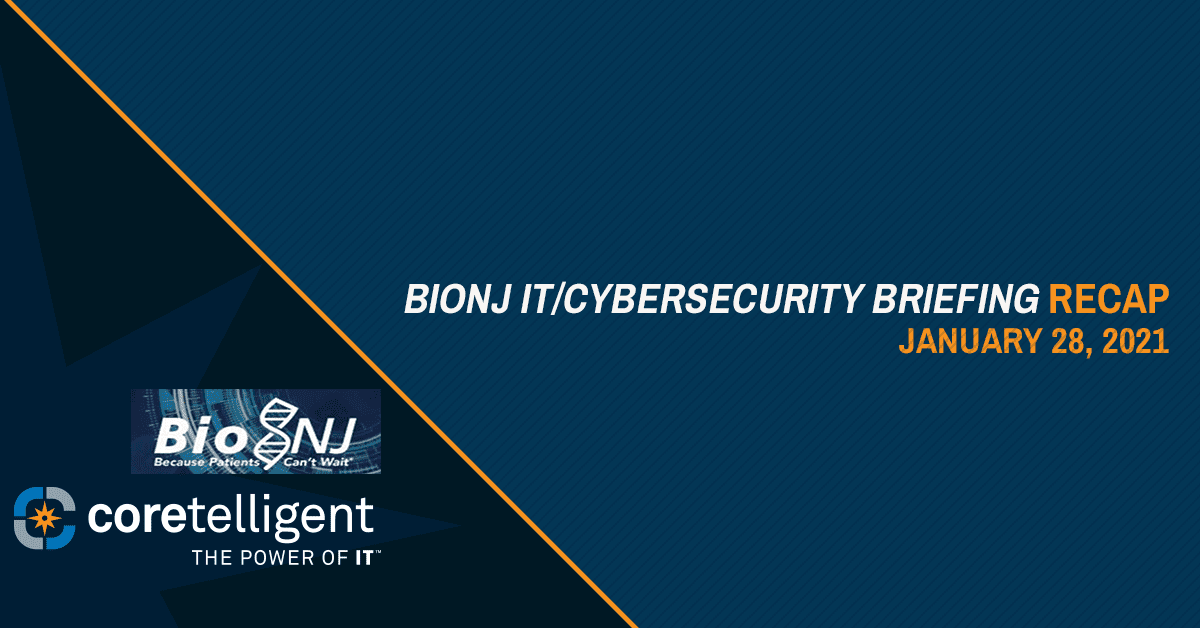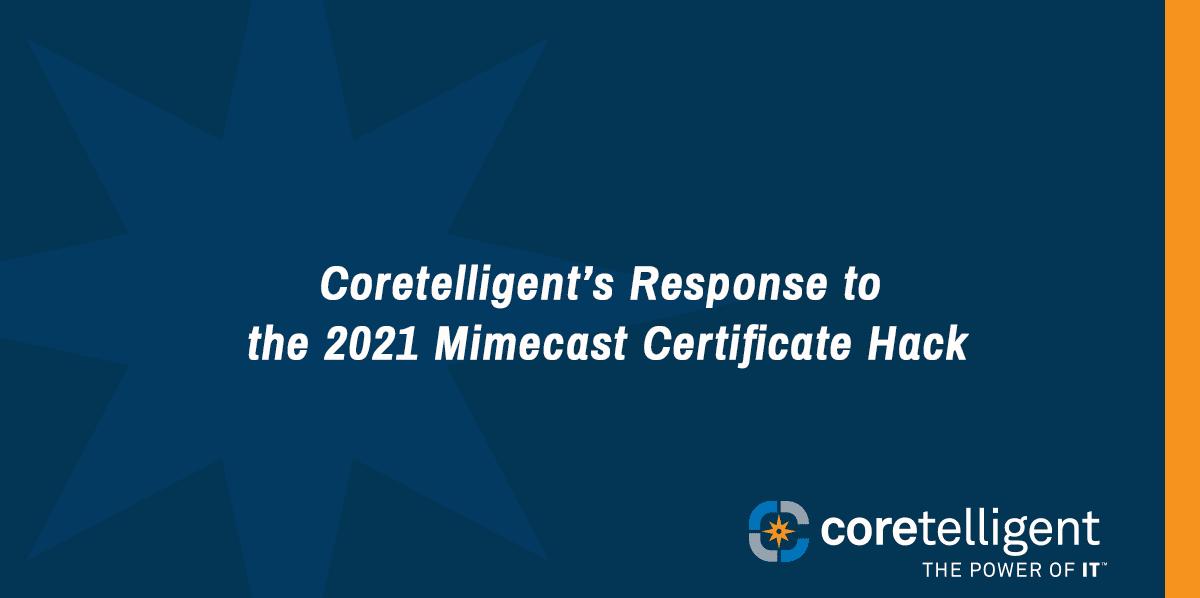Thoughts from Coretelligent’s Chief Technology Officer,
Chris Messer
This month marks the one-year anniversary of when many of us transitioned to out-of-office work environments in response to the COVID-19 Pandemic challenges. What we thought to be only a few weeks- or months-long experience ultimately led to our current full-time work from home experience, and this may be the same for many other organizations worldwide. As we look back, it is important to reflect on the many lessons and (now) permanent changes that have occurred during this time.
Many organizations were forced to either embrace new vendors and technologies to enable remote work and collaboration or quickly double down and expand existing plans and deployments overnight. The shifts to remote access or cloud-first resources caught many companies mid-stride, while others were already well down their digital transformation path and had a much easier time adjusting and coping in the early stages of the Pandemic.
There have been several big winners in the vendor and tech ecosystem, including Zoom, Microsoft, and Amazon to name a few. There are also many cloud focused vendors that have further enabled improved remote collaboration and work during the Pandemic to enable companies to adjust from previous traditional office workflows.
The following are some of Coretelligent’s reflections of changes and challenges many organizations have experienced during a year like no other:
Vendor and Tech Changes
With the onset of the pandemic and shuttering of offices around the country, many organizations struggled with shifting their technology stack to accommodate a steep influx in remote work. In general, there was a larger emphasis around increased adoption and investment in cloud computing, cybersecurity solutions, and communications/collaboration tools, especially in the small- to mid-size business segment.
Technologies offering remote access capabilities, such as virtual private networks (VPNs) and virtual desktop infrastructures (VDIs), suddenly had to deal with a larger number of regular users. Items such as telephony and file sharing/collaboration software also required new strategies as workers were removed from their traditional office-based resources. Companies needed to scale their ability to keep employees collaborating, and those that were not as far along in developing their strategies and cloud adoption were left with large hurdles to clear in a short amount of time.
Vendors continued the march towards a subscription model for many services as cloud computing continues to spread. This model has allowed organizations to flex their usage up or down as their hiring and operational needs adjusted throughout the pandemic.
Zoom and Teams have become ubiquitous parts of our everyday vernacular due to the increased consolidation of communication and collaboration tools in remote environments. These platforms have both been powerful enablers, yet have bled into our socially distant personal lives as well with “Zoom cocktail hours” and virtual family gatherings becoming regular occurrences. These tools have also enabled us to be “always available” which has also caused new work/life balance challenges for many individuals and organizations from an HR perspective.
Security Challenges
As part of the WFH shift, several new security challenges came to light. Many organizations suddenly had to deal with a user population working from a wide variety of potentially insecure locations from a mix of corporate and personal devices. Ensuring that employees could securely access services and data properly, regardless of whether they were on a corporate or personal device, became a key issue.
The biggest driver around security for remote workers is the concept of identity and access control. Physical location has become far less critical, but the validation of user identity and subsequent access and permissions that are granted to that identity are much more important than ever. This change has helped to drive the convergence of several key technologies (SDWAN, CASB, FWaaS (firewall as a service), and Zero Trust) into a unified, cloud-delivered service known as Secure Access Service Edge, or SASE. The goal of SASE is to simplify WAN/connectivity deployments, bring improved efficiency and security, and help provide the appropriate amount of bandwidth and performance on a per application basis.
Over the past year, we have also seen and experienced several security challenges related to remote operating models. The biggest challenges, among others, include addressing the security needs of remote workers, how to secure home networks, whether to permit or block employees to connect and work from personal devices, and how to secure corporate data that can be readily downloaded or copied.
Another key area of focus and debate been around vendor security and data integrity. With several high-profile vendor hacks and data breaches, companies of all sizes can be targets and victims of nation-state hackers as displayed by the recent SolarWinds and Microsoft incidents. Companies now need to decide how to balance and distribute their critical services and data across one or many vendors. This also impacts how organizations think about their disaster recovery and business continuity planning. With key assets residing with a third-party vendor, organizations may need to reevaluate what this means for their business if the vendor suffers an outage.
WFH / Productivity
As we have seen, there has not been a dire “drop” in productivity throughout the Pandemic, and many organizations and employees have been able to adjust with little to no overall impact.
The biggest challenge moving forward is how to effectively continue to manage employees at scale remotely while avoiding tech and connectivity burnout, and managing work/life balance, despite more flexible schedules.
Employers are exploring ways to help monitor usage and productivity for employees without overstepping privacy bounds, making such efforts appear draconian, or interfering with employee morale.
Our “New Normal” and the Future
Looking further into 2021 and beyond, it is hard to envision our society returning 100 percent to the pre-Pandemic model due to these changes. The Pandemic has showcased how organizations can be more agile and remain productive with a distributed workforce and technology stack.
As we move forward, several trends will predictably continue and become even more essential as businesses continue to evolve their working model post-Pandemic:
Vendor Consolidation – As organizations look to manage their security risk, reduce their attack profile, and generally improve efficiency and budget, reducing the number of vendors and products in use will continue to be a large part of the conversation and planning in 2021 and beyond.
AI & ML – Artificial intelligence (AI) and machine learning (ML) are becoming more mainstream and are applied to help businesses solve real-world problems at a much faster pace than ever before. This is lending itself towards more automation across many industries and verticals which will also help boost productivity.
Data Management – “Big” data management tools in the cloud are going to enable companies to more rapidly store, process, and manipulate data from multiple sources to help drive more business decisions, customer response, and overall efficiency.
Cloud / SaaS – More services will continue their evolution to a full cloud/Software as a Service (SaaS) model with perpetual subscriptions becoming the norm. Traditional IT asset ownership models will continue to face downward pressure across the board. Public cloud will largely make self-hosting for small- to mid-sized businesses impractical from a cost benefit perspective.
Security – The concept of SASE and a unification of networking and security tools to help drive overall efficiency, performance, and security for users and applications, wherever they are located, will continue throughout 2021 and beyond.
We are still adapting to the unpredictable nature of the COVID-19 Pandemic, and by some time in the future, these changes and challenges may feel miniscule. Your organization must remain resilient to face any unexpected events, whether they be public health crises, natural disasters, or any other type of loss. If your organization is having trouble adjusting to remote work or is interested in investing in expert-level solutions, contact Coretelligent. We are happy to help you navigate during the remainder of the Pandemic as well as post-Pandemic. Until then, remain positive, perform a regular evaluation of your organization’s IT vendors, security posture and cloud strategy to ensure you are meeting the needs of the business, your workforce, and your customers, and above all, stay safe.
To download our infographic predicting the future of work environments post-Pandemic, fill out the short form here.











